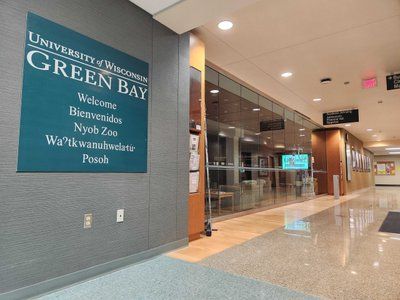By Tom Still
BARABOO – Ian Abston, the energetic young co-founder of NEWaukee, began his presentation to Sauk County’s economic development leaders by confronting head-on the question of how people view the millennial generation.
Words such as “lazy,” “entitled,” “spoiled” and even “useless” flashed across the screen as Abston talked about perceptions of his generation, roughly defined as people who came of age at the turn of the 21st century. Some call them Generation Y; others prefer Net Generation; and particularly harsh critics sometimes grumble about The Worst Generation.
No matter what they’re called, the rest of us need to get over it: The millennials are America’s workforce of the future… and not the distant future. By 2020, they will make nearly half of the U.S. workforce and by 2030, about three-quarters.
For a state such as Wisconsin, which skews slightly older than the U.S. average and which faces talent migration issues, the question of how to attract and retain millennials is crucial. It’s why the Sauk County Economic Development organized “#nextgensaukcounty” to hear what communities outside Wisconsin’s largest cities can do to keep the best and brightest home – and to lure other young people from beyond our borders.
Abston describes NEWaukee as a social architecture firm that “inspires a collision of all Milwaukee has to offer.” That means a live-work-play collision that can range from educational events to volunteer activities to nightlife. While some of what motivates millennials in Milwaukee may not apply to smaller communities, much of it does translate – especially when it comes to generating a compelling sense of place.
In my own remarks to about 215 people who gathered in Baraboo for the #nextgen event, I listed my own (admittedly Baby Boomer) perceptions of what smaller communities should know about attracting and retaining young people. It aligned almost exactly with Abston’s checklist and included:
- Remembering that young people are often motivated first by selecting where they want to live, then finding a job. Millennials value the elusive life-work balance.
- That balance is often defined by a diverse nightlife, creative activities and a sense of community that includes them, not just older generations.
- Because many millennials aren’t married – yet – or tend to marry in their late 20s or early 30s, they are often renters. They want attractive, safe places to live that are centrally located, even if the downtown is relatively small.
- The outdoors is important to most millennials. Parks and proximity to green space and recreational areas are a strong draw.
- The right digital connections are a must. Communities without fast, reliable broadband connections might as well be located in Siberia. Young people won’t move to places that lack broadband and they certainly won’t start businesses there.
- Millennials want to live where there are other millennials, who often share similar values and social tolerances. They shy away from places they perceive aren’t welcoming.
Wisconsin is not a state of big cities. Outside of Milwaukee and Madison, there are no “top 100” population centers. It is, however, a state of mid-sized cities, with 10 other cities boasting populations of 50,000 or more, 25 others at 20,000 or more, and 33 others at 12,000 or more.
Economic changes in the United States and abroad means very few of those cities are “one-company towns,” as they might have been in the past. Today, to be vibrant, they need to pursue strategies for economic diversity, encourage new business starts, maintain the right infrastructure (which includes broadband), and build an educated workforce that includes internships, apprenticeships and other entry-level positions with a future. Getting students engaged in career choices in high school – before they are tempted to leave Wisconsin – is crucial.
Smaller and mid-sized communities in Wisconsin need not throw in the towel when it comes to attracting and retaining young workers. Those workers will come and stay if they feel connected, digitally and socially; if they can find or make their own opportunities; and if they are encouraged to participate in creating or fostering a sense of place.
According to the U.S. Census Bureau, this year was the year when millennials outpaced Baby Boomers as a percentage of the American population. They may not be better or worse than any past generation, but millennials have unique preferences that smart communities must recognize in order to prosper.





